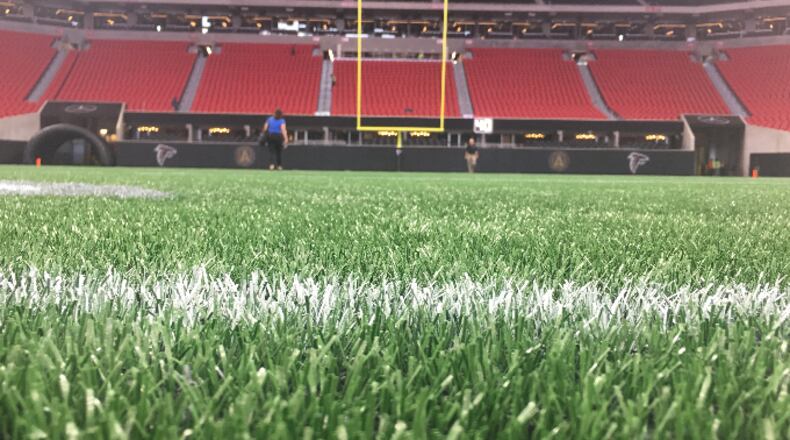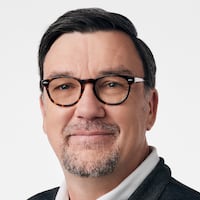Though Mercedes-Benz Stadium may be a palace for athletes with its expansive locker rooms, hydro-therapy pools and warm-up areas, the most important factor in determining how Atlanta United will play in its new home, and if it makes the playoffs, will be the artificial turf.
Nine of the team’s remaining 10 games, including the first at the $1.5 billion stadium Saturday against Dallas, will be played on synthetic surfaces. That includes eight at home. The team is sixth in the Eastern Conference with 36 points. It trails third-place Chicago by eight points, but has played three less games.
Making the playoffs, and earning the best possible seeding, may come down to the rolls, bounces and speed of the ball on what the players hope is a wet FieldTurf Revolution 360 surface. The ball rolls faster on wet turf.
“For me, the only thing that could affect us is the turf, that we don’t adapt quickly to it,” midfielder Hector Villalba said.
The team was 6-2-1 on the grass surface of their early-season home at Georgia Tech’s Bobby Dodd Stadium.
The team has trained at Mercedes-Benz Stadium at least once, and the players gave the field a thumbs-up after a training session that lasted less than two hours. The team also has a pitch at its facility in Marietta that has the same type of turf and the same dimensions (75 yards wide by 115 yards long) as what they will play on in their next six consecutive games. The team trained on the artificial field twice last week and will train at Mercedes-Benz Stadium on Friday.
“We will train as much as we can without overdoing it,” Atlanta United midfielder Jeff Larentowicz said.
There are mental and physical X-factors with playing on turf that at least one Atlanta United player has seen.
Fullback Greg Garza played on turf at the home of his parent club, Tijuana, from 2012-15. Because players prefer grass, some can’t even stomach the idea of not playing on it. Tijuana won a championship in 2012 on its artificial turf. One of the teams that played for the MLS Cup last year, Seattle, plays on turf at its home.
“It’s a different ballgame,” he said. “In Tijuana, we used it to our advantage. Every other team in Mexico came to the turf field already complaining about it. That’s where we used it to our advantage.”
Villalba also played at Tijuana and its artificial turf while on loan from Atlanta United last season. He said using the artificial field at the training center in Marietta will be key.
“When you train on turf it’s easier to adapt to it,” he said. “As an away team, when you only train on it a couple of days ahead of time …”
Physically, recovering from playing on turf can take a little bit longer for “us older guys,” team captain Michael Parkhurst said. With so many games in such a short period of time, Parkhurst said everyone will need to contribute quality minutes.
“It’s going to be virtually impossible for guys to play all eight games,” Parkhurst said. “Guys are going to have to step up, maybe guys that haven’t played a ton of minutes, thus far in the season.”
Atlanta United has played on turf four times this season, taking a respectable five of 12 points: a 6-1 win at Minnesota United; a 0-0 draw at Seattle, which features the same turf used at Mercedes-Benz Stadium; a 1-1 draw at Portland, which also features the same turf; and a 3-1 loss at Vancouver.
In addition to the eight home games that will be played on turf, Atlanta United also will play on the synthetic surface at Gillette Stadium against New England on Sept. 30.
“With all of these games it should happen pretty quickly for us,” Larentowicz said.
Listen to our new podcast:
About the Author
Keep Reading
The Latest
Featured

